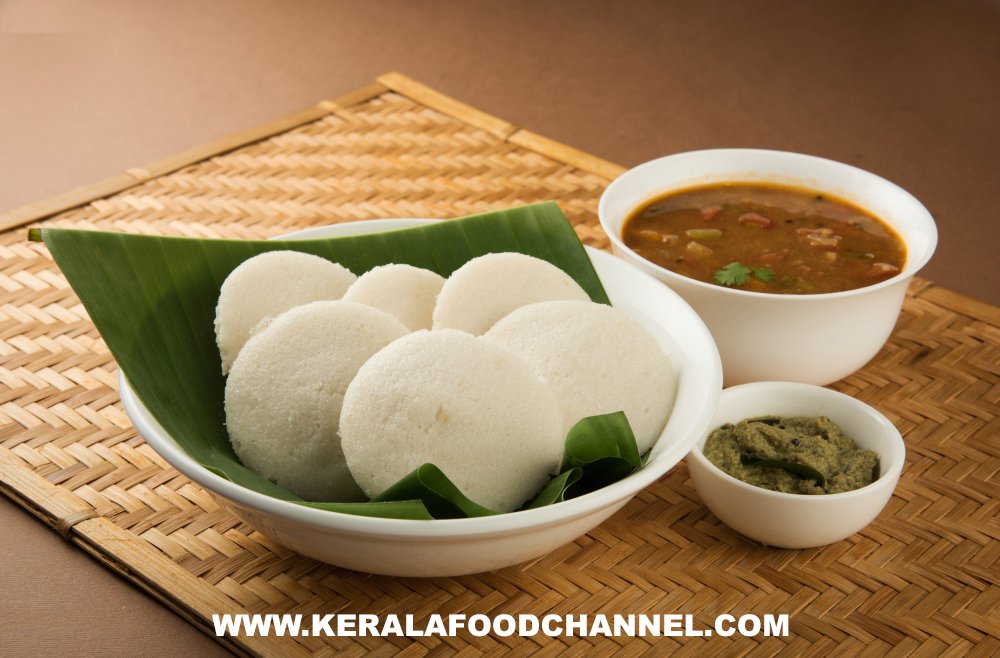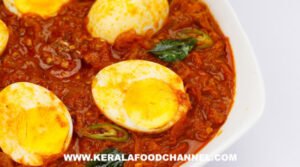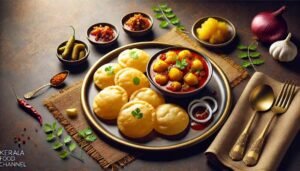Kerala’s Traditional Food: A Flavorful Journey Through God’s Own Country
Welcome to the Heart of Kerala Cuisine
Have you ever tasted food that feels like a story on your tongue? That’s exactly what Kerala’s traditional dishes offer—a tale told through coconut, curry leaves, and coastal spices. Nestled along the lush southwestern coast of India, Kerala is a paradise not just for travelers, but also for food lovers who seek authenticity, variety, and soul-warming meals.
Whether you’re new to South Indian food or a seasoned spice-lover, this guide takes you through the essential flavors, must-try recipes, and insider cooking tips of Kerala’s rich culinary heritage.
What Makes Kerala Food Unique?
One word: balance. Kerala’s cuisine is all about harmony—between spice and sweetness, coconut and curry, sea and land.
Signature Ingredients
-
Coconut (grated, milk, oil): It’s the lifeline of Kerala kitchens.
-
Spices: Think turmeric, black pepper, cloves, cardamom, and cinnamon.
-
Rice: The everyday grain, often served with every meal.
-
Seafood: From prawns to pearl spot fish, the sea is generous.
-
Curry Leaves: The aromatic crown jewel in most savory dishes.
📌 Tip: Keep coconut oil and mustard seeds handy if you want to replicate Kerala’s authentic taste at home.
Traditional Kerala Dishes You Must Try
Let’s roll up our sleeves and dive into the deliciousness, one plate at a time.
1. Appam with Vegetable Stew
A cloud-soft pancake meets a creamy coconut stew. Comfort food at its best.
Ingredients for Appam:
-
2 cups rice flour
-
1 cup coconut milk
-
1 ½ tsp yeast
-
1 tsp sugar
-
1 cup warm water
-
Salt to taste
Ingredients for Stew:
-
2 cups chopped veggies (potatoes, carrots, beans)
-
1 onion, sliced
-
1 cup coconut milk
-
Ginger-garlic paste, green chilies, mustard seeds, curry leaves
How to Make It:
-
Ferment rice flour with yeast overnight.
-
Sauté onions, spices, and veggies in coconut oil.
-
Add coconut milk at the end for a silky finish.
-
Pour appam batter in a hot curved pan, swirl, and cook covered until the center is soft and edges are lacey.
👉 Serve hot. Dip, scoop, smile.
2. Nool Puttu (String Hoppers)
Looks like noodles. Tastes like home.
-
Mix rice flour and water into a pliable dough.
-
Press through a nool puttu mold into a steamer.
☕ Perfect with a cup of strong filter coffee.
3. Thalassery Chicken Biryani
This isn’t your usual biryani—it’s lighter, spicier, and more aromatic.
Ingredients:
-
2 cups Kaima rice (or basmati)
-
500g chicken (marinated with garlic, ginger, chili, yogurt)
-
Whole spices (cardamom, cinnamon, cloves)
-
Onions, tomatoes, mint, and coriander
-
Saffron milk for that signature aroma
Dum Time:
Layer chicken and 70% cooked rice, add saffron milk, seal the pot, and cook on low heat for 20 minutes.
🥄 Garnish with fried onions, boiled eggs, and chopped coriander.
4. Kerala Sadya (Banana Leaf Feast)
More than food—it’s an experience. Usually served during Onam or weddings.
* Includes:
-
Parboiled rice
-
Avial (mixed veggies + coconut)
-
Olan (white gourd in coconut milk)
-
Thoran (dry stir-fry with coconut)
-
Sambar, rasam, pickles
-
Pappadam, banana chips, and payasam (dessert)
📌 All arranged on a banana leaf. Start from the top left, end at the dessert—it’s tradition!
5. Soft Idlis with Sambar & Coconut Chutney
Fluffy, light, and friendly for your stomach.
-
Ferment rice and urad dal batter overnight.
-
Steam in idli molds for 10-12 mins.
-
Serve with:
-
Spicy sambar (made with toor dal and veggies)
-
Coconut chutney (coconut, chilies, ginger, mustard seed tempering)
-
☕ Morning sorted with a cup of masala chai.
Why Kerala Cuisine is Also a Health Win
Did you know traditional Kerala food is packed with nutrients?
| Food Item | Nutritional Benefit |
|---|---|
| Coconut | Healthy fats (MCTs), fiber, minerals |
| Turmeric & Pepper | Anti-inflammatory, aids digestion |
| Lentils & Dal | Plant-based protein |
| Vegetables | Antioxidants, vitamins A & C |
| Seafood | Omega-3 fatty acids, brain and heart health |
👍 Natural, balanced, and mostly gluten-free.
Reader Favorites & Tips
-
“Can I use store-bought coconut milk?”
Yes, but fresh is best! If using canned, dilute with water slightly for stews. -
“Is Kerala food too spicy?”
Not always. It’s flavorful rather than fiery. You can adjust chilies to suit your taste. -
“Where can I try authentic Kerala dishes?”
If you’re in India, visit a ‘toddy shop’ or attend an Onam feast. Internationally, look for South Indian or Kerala-specific restaurants.
Final Thoughts: Bring Kerala to Your Kitchen
Kerala’s traditional food isn’t just about recipes—it’s about love, legacy, and connection. With every ladle of stew and bite of biryani, you’re tasting a slice of culture shaped by geography, faith, and centuries of family cooking.
Whether you’re cooking for a festive dinner or your regular lunch, these dishes bring warmth to any table.
💬 Which Kerala dish are you most excited to try first? Comment below or share your version with us!






